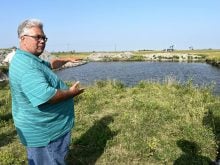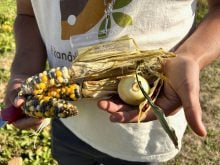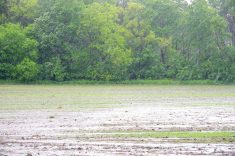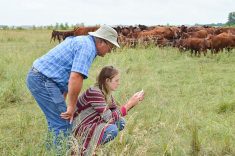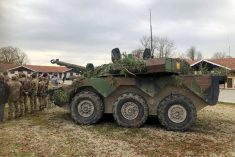I think we sometimes worry too much about what is in the pasture blend and not enough about managing the pasture. There is a difference.
This topic came up a few weeks ago when a Manitoba producer asked a grazing group on Facebook: “How do I take the alfalfa out of a hay stand so I can graze it?”
All the answers were right. Where they varied depended on the context of the owner’s property. Suggestions ranged from chemical use to grazing the forage stand with the alfalfa left in. My thought was, if the alfalfa is removed, what is left in the stand to be grazed?
Read Also
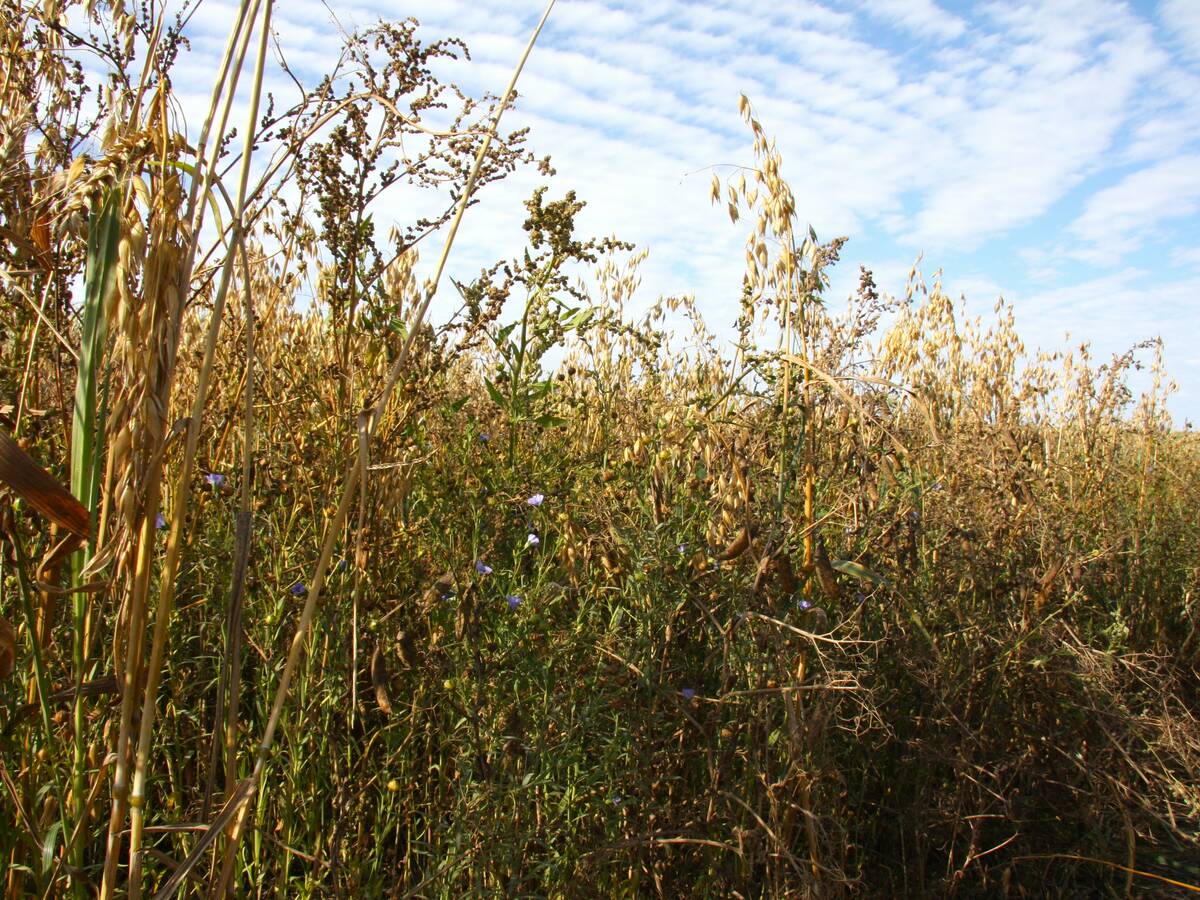
PepsiCo nearly doubles regenerative scope
Another 240,000 farm acres managed through regenerative agriculture will be supported by PepsiCo across Manitoba and Saskatchewan by the end of 2025.
That was followed by a deeper thought. What will come up to fill the stand because nature abhors bare ground?
On our farm, we try to have 15-30 per cent of the stand as legumes. That’s a guide, not a hard number.
Through grazing management, I can increase or decrease the amount of alfalfa in the stand. By letting plants go to seed, I have increased the number of seeds in the soil seed bank. If I feel the alfalfa percentage is too high, I will graze the paddock hard in August and early September and then graze it hard again in mid-to-late September. This will reduce the alfalfa root reserves, so the following season has less alfalfa potential.
I am attempting to increase other legume species like yellow clover (sweet clover) and black medic. Both are short-lived legumes and come and go in the stands.
Plants do communicate with each other, although we’re not totally sure whether the mechanisms are above or below ground. Things like quorum sensing have come up, with plant root systems transferring nutrients from one plant to another through soil life (microbes).
Thinking back 25 years, researchers said there was no proof that plants can and do communicate to each other. Now it is accepted that plants can communicate in species and among other species in the plant community. Through this communication, they will come and go through the life cycle of the stand, as nitrogen fixation is required for the soil and plant health.
Through management (and the fact I prefer to not spend money for improvement) we have increased alsike and red clover and birds foot trefoil in some paddocks and we are trying to increase the spread of seed to other paddocks through livestock.
We let the cattle graze plants that have gone to seed, then move them to a new paddock to spread their manure 24 hours after grazing the seeds. Dung beetles then bury it into the soil for next year. I must admit that wild deer have done a better job of spreading legume seed.
In dry years, the clovers and trefoil will dry off and die. But in a wet spring, seeds will germinate from the seed bank and renew the stand. Letting the plants set seed every few years is the best way to ensure a healthy and diverse forage stand for the future.
We are now watching cicer milkvetch slowly establish on our property. The adage is to plant the seed and check it five years later. It is deep rooted and does well in dry years. The leaves stay on the plant longer into fall, which bodes well for late-season grazing.
Some producers familiar with this plant have cautioned that it may become invasive in the forage stand as the stand gets older. I am holding out judgment until I get more benchmarks and my own observations over time.
Grasses should make up 50-70 per cent of the forage stand. All grasses are good for grazing. Cool season, warm season, bunch grasses and stem grasses should all be in the forage blend.
The percentage of each is determined by management. No two forage production years are the same, and no two forage paddocks will be the same, and that is a good thing.
Some factors are consistent, though. When was the timing of spring rains? How and when was the pasture grazed? How much forage was removed? Did the grass go to seed? Were there fall rains? How much cover is left to cover the ground and catch snow?
Changing when a paddock is grazed each year encourages different grasses to grow the next year. No paddock should be grazed at the same time each year. This will cause plant selection by the herd, causing overgrazing of some plants and undergrazing of others.
Over time, this routine will create a monoculture that will survive being grazed at that one time of the year. What’s often left behind is a stand of grasses that the herd does not want to graze.
On the other side of the coin, not grazing the forages may cause the stand to die or degrade over time. It is a balancing act.
To monitor the pasture in real time, the manager needs to physically be in the paddock. Select areas of the paddock to stop and put your head down to really see what is happening in the forage stand. You cannot check the quality of a pasture by driving by. You must explore the paddock, paying special attention to what is being grazed and what is not being grazed.
Remember to manage for what you want in the stand, not what you do not want. It is often too easy to see and fight what you don’t want. It is much tougher to identify what you do want and encourage it to grow.
Truthfully, many of us do not know exactly what we want in our paddocks until we see it in someone else’s pasture. That is a great way to learn from others.
The remaining 20 per cent of the forage stand should be forbs. This is where we categorize dock, plantain, dandelion, the thistle family, crocus, snowberry, wolf willow and many other plants. Having forbs is a healthy indicator, as they will grow at different depths in the soil and different heights in the paddock.
Some forbs are higher in certain minerals and are required as diet to balance livestock health. They will bloom at different times early and later in the season, providing a staged food source for insects. As managers, we have to start thinking of the wildlife we are feeding as we create a healthy ecosystem for all.
Moderation is the key when evaluating forb population. Too many forbs, and you will have a problem with bare ground, soil compaction and the associated potential of under or overgrazing. If you monitor the percentage of forbs in the forage stand, you will have a great handle on the the health of the whole paddock.
If you have an area with too many forbs, you have to think about what may be done to correct the issue. In some cases of winter bale grazing, we’ve seen a surge in thistles, often as a result of soil compaction in the feeding area. Normally, within a couple of years, the thistle is gone or reduced as the soil issue resolves.
In these scenarios, it is important to look at the big picture for cause and effect. Sometimes, we must stand back and look at the whole area.
Additionally, we must remember that there is no one forage that will do everything we ask in a pasture, just as there is no one food you need to live on. Humans and livestock require a diverse supply of food sources to maintain a healthy body and mind.
I once watched a whitetail doe eat all the flowering heads off a patch of sow thistle and wondered why. I never figured it out, but it was a fine example of selective grazing.
It’s important to remember that there is not one belle of the ball when it comes to different types of forages. I have seen grazers who successfully managed single species stands. You must be a high-level manager to graze a pure stand of alfalfa, cicer milkvetch, meadow foxtail, meadow brome or orchard grass.
I have found a diverse blend of legumes, grasses and forbs to be far more forgiving and consistently allow a longer grazing season. There’s power in timing and variety.



